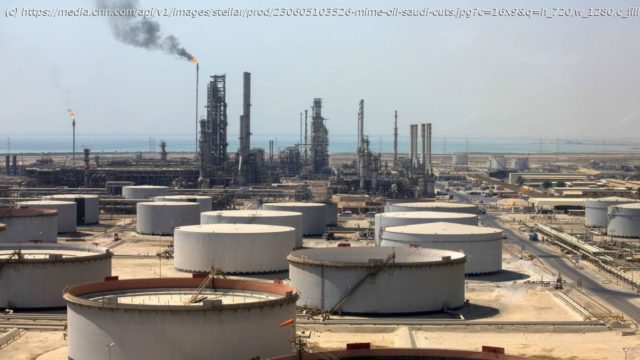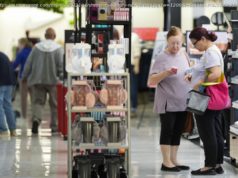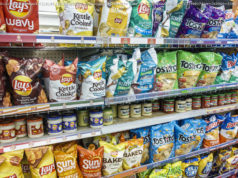Array
Editor’s Note: A version of this story appears in CNN’s Meanwhile in the Middle East newsletter, a three-times-a-week look inside the region’s biggest stories. Sign up here.
Saudi Arabia surprised traders again on Sunday with an oil production cut of about 1 million barrels a day, roughly 1% of global supply, which sent oil prices climbing.
The Brent oil benchmark rose by more than 2% to around $78 a barrel on Monday as Riyadh reacted to economic headwinds that have impacted global oil demand. Saudi Arabia’s voluntary cut goes beyond a broader deal by the Organization of the Petroleum Exporting Countries (OPEC) and allies to limit supply into 2024.
That still leaves oil hovering around 9% lower than the beginning of the year, meaning Saudi Arabia is in a tight spot when it comes to paying for the gigaprojects that lie at the heart of its Vision 2030 program to transform the economy.
Oil prices are $2-3 a barrel lower than the kingdom would prefer, says Amena Bakr, chief OPEC correspondent at Energy Intel. The International Monetary Fund believes the price the Gulf state needs to balance its budget is close to $81.
The kingdom has slipped back into a budget deficit this year after reporting a surplus in 2022 for the first time in almost a decade. During the first quarter, it reported a deficit of $770 million as the government ramped up spending 29%.
But Saudi Arabia knows that it cannot rely solely on a fluctuating oil market for income. Along with its efforts to raise oil prices, it is also trying to bring in investment from abroad.
With deadlines for its Vision 2030 creeping closer, more funding than ever is needed to complete projects such as the $500 billion Neom city in the northwest of the country.
“There’s just a lot of pressure as so many of the projects go into the construction phase now… there’s just a tremendous demand for capital,” says Karen Young, a senior research scholar at the Columbia University Center on Global Energy Policy.
Although non-oil revenues increased by 9% in the first quarter, nearly two-thirds of Saudi Arabia’s income still comes from selling fossil fuels.
And foreign investment isn’t anywhere near where Riyadh wants it to be. Saudi Arabia targets $100 billion in annual foreign direct investment (FDI) by 2030. Last year, FDI slumped a whopping 60% from the year earlier to $7.9 billion, Forbes reported, citing the Saudi Central Bank.
Saudi officials, however, say that the kingdom has plenty of money to fund its ambitious projects, which among others include the 170 kilometer (105 mile)-long linear city called The Line, and a futuristic plan to revamp the capital.






